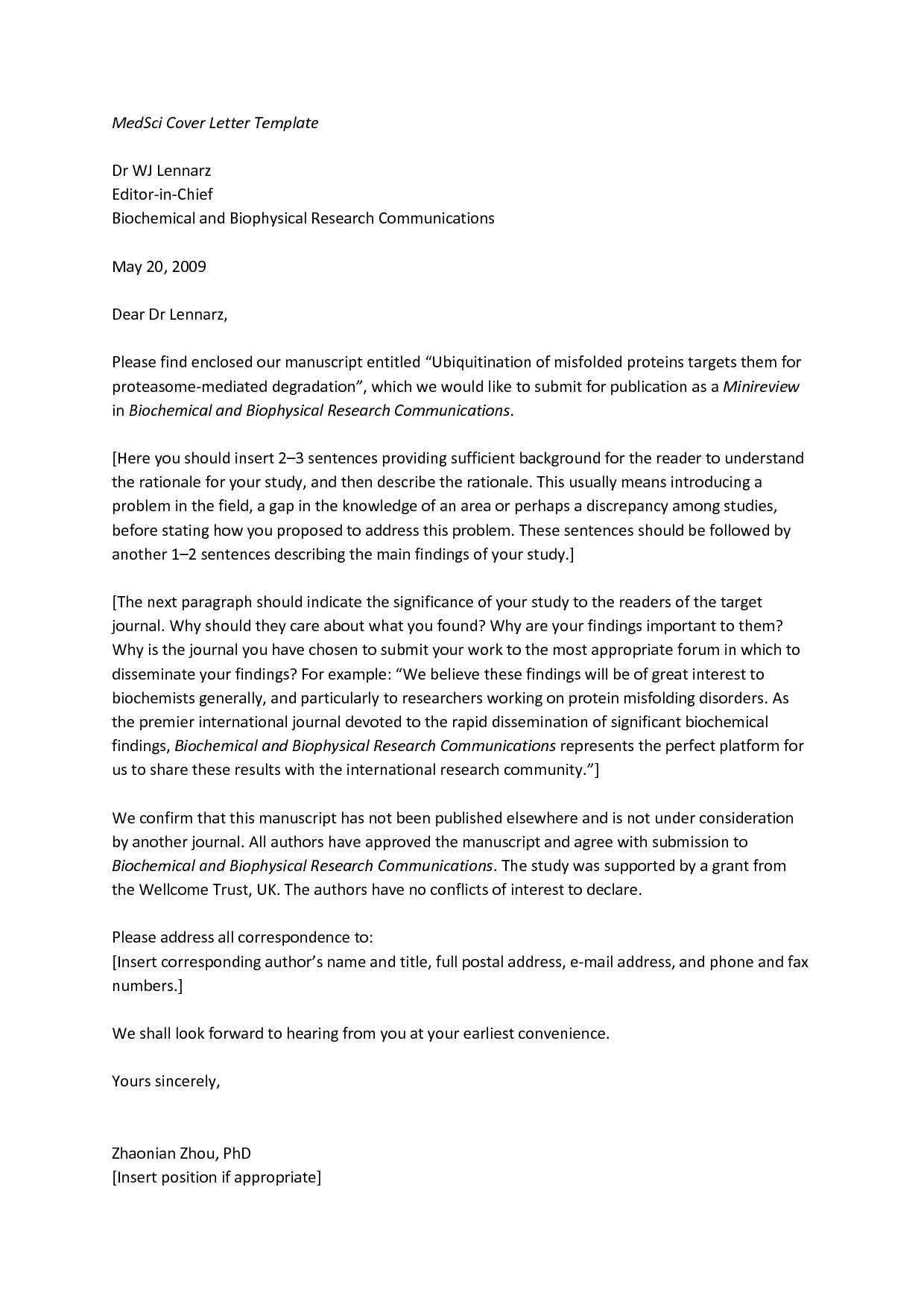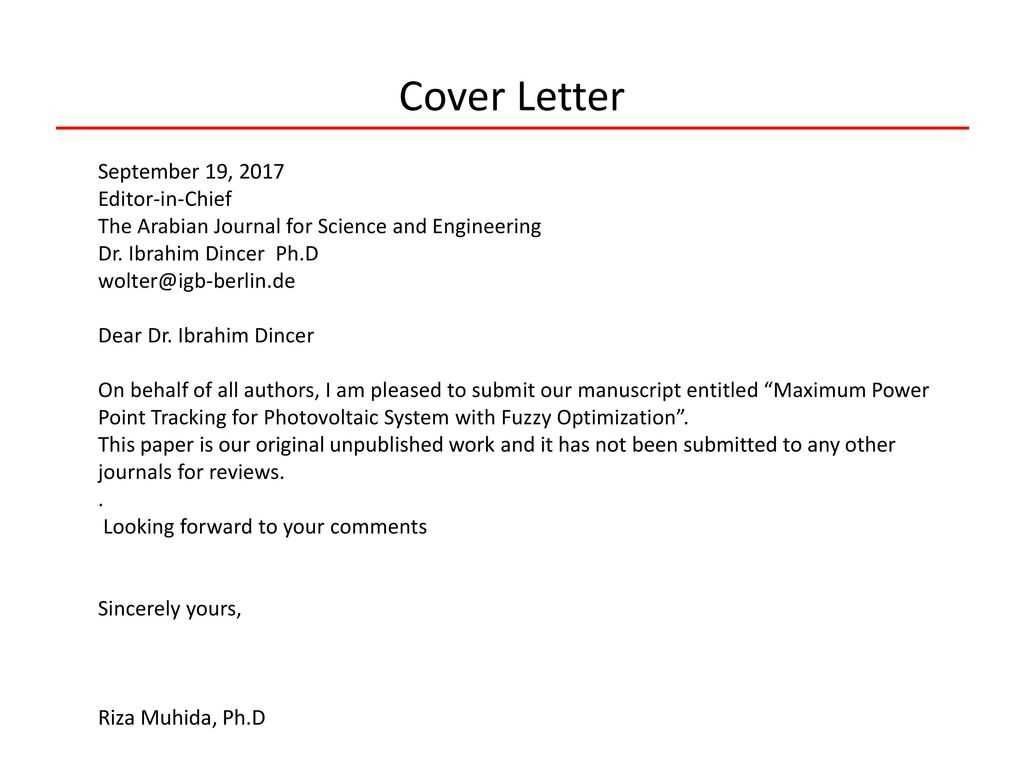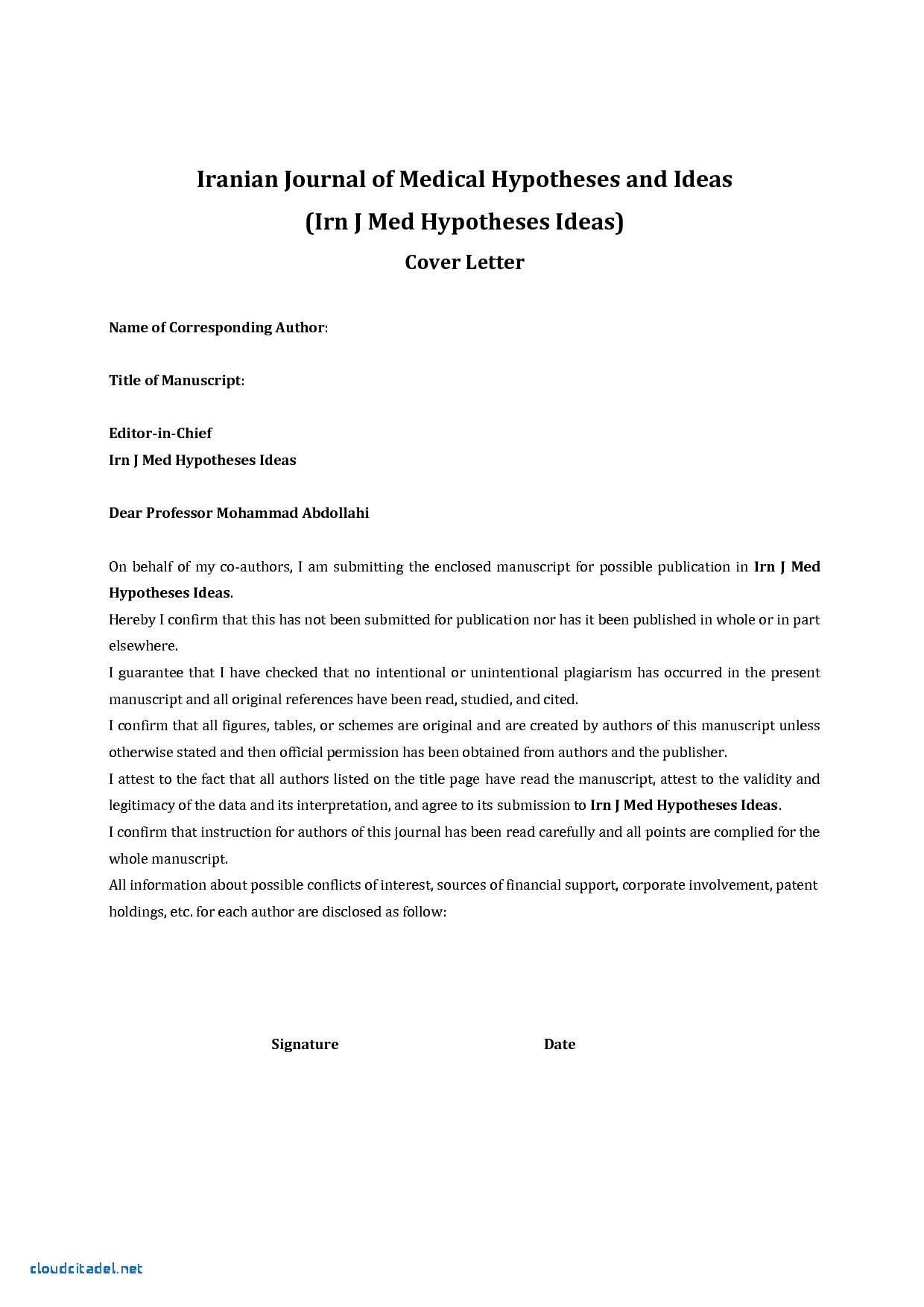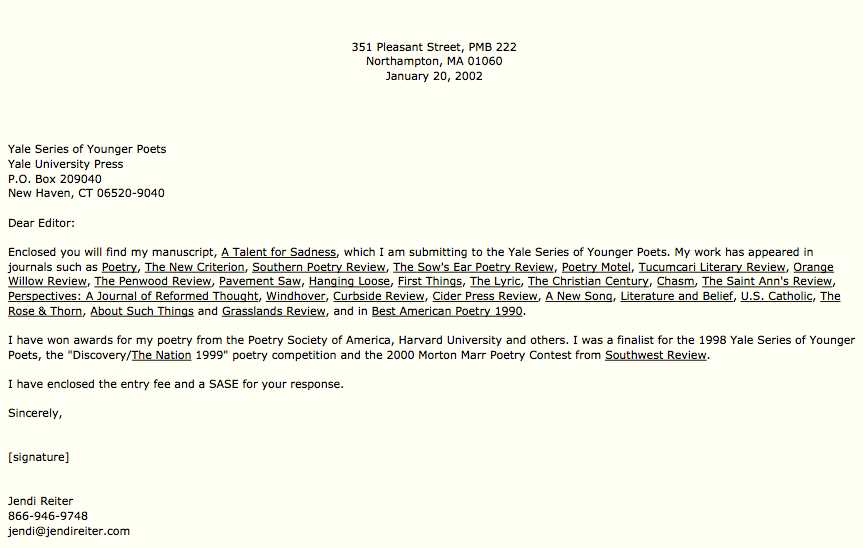Journal article cover letter template

When submitting a journal article, a well-crafted cover letter can make a significant difference. Begin by clearly stating your purpose for writing, such as the submission of your manuscript for consideration in the journal. Keep the tone professional but approachable, ensuring that the editor can quickly grasp the key points of your submission.
In the body of the letter, mention the article title and a brief summary of the research or findings. Avoid overloading with excessive detail, but include enough information to demonstrate the relevance of your work to the journal’s scope and audience. Highlight any unique aspects of your study that make it a strong fit for the journal.
Make sure to mention any relevant conflicts of interest and acknowledge the contributions of any co-authors. If you’re submitting a revised manuscript, indicate the changes made in response to previous feedback. Keep the closing statement polite, expressing appreciation for the editor’s time and consideration.
Example Closing: “Thank you for considering our manuscript for publication. We look forward to your feedback and are happy to provide any additional information you may require.”
Journal Article Cover Letter Template
Begin your cover letter with a clear statement of your intent. Address the editor directly and introduce the article by its title and the journal you are submitting to. Mention why your work fits the journal’s scope and what contribution it makes to the field.
In the following paragraph, summarize the key findings or arguments of your article. Highlight the main objective and outcomes, showing how it adds value to the ongoing discussions in your area of research. Keep this part concise and focused on the central idea of your paper.
If your article is a revised version, mention the previous submission and any significant changes made in response to the reviewers’ comments. This shows your willingness to engage with feedback and improve your work. Be specific about the revisions without going into unnecessary detail.
Conclude with a brief expression of gratitude for the editor’s time and consideration. Include your contact information and indicate your willingness to answer any questions or provide further information if needed.
Key Elements to Include in Your Cover Letter
Highlight your interest in the specific position by referencing the role and company early in your letter. Clearly demonstrate how your background aligns with the job’s requirements. Focus on key accomplishments that directly relate to the job description.
Provide concrete examples of how your skills have led to measurable results. Use facts and numbers to show your impact, making your achievements more tangible to the reader.
Address the hiring manager by name if possible. This small gesture helps personalize the letter and shows you’ve done research on the company. Be sure to express your enthusiasm for the opportunity without sounding overly formal or stiff.
Clearly state why you’re a good fit for both the position and the company’s culture. Discuss how your values align with the company’s mission and how you can contribute to its goals.
| Section | What to Include |
|---|---|
| Introduction | Job position, company name, and brief personal introduction |
| Skills and Experience | Relevant skills, achievements, and results tied to job requirements |
| Company Fit | Why your values and goals align with the company |
| Conclusion | Expression of enthusiasm, availability for an interview, and gratitude |
How to Address the Editor Professionally
Begin with a respectful and formal greeting. Address the editor by their last name, preceded by the appropriate title, such as “Dr.” or “Mr.” or “Ms.” If you are unsure about their title, use “Dear Editor” as a neutral option.
Maintain a polite and respectful tone throughout your letter. Even if you are submitting a manuscript to a journal where you have prior experience, always use formal language. This helps establish a professional relationship and sets a serious tone for your submission.
Use Proper Salutations
Instead of overly casual greetings, opt for standard phrases like “Dear Dr. Smith” or “Dear Editor,” followed by a comma. This ensures that your tone remains professional and shows respect for the editor’s position. Avoid informal terms or greetings like “Hi” or “Hello” as they may come across as too relaxed.
Be Concise and Clear
After addressing the editor, focus on being direct and clear about the purpose of your submission. Avoid unnecessary elaboration in the introduction. For example, say “I am submitting my manuscript titled…” rather than using long-winded sentences. This allows the editor to quickly understand your intention.
Crafting a Concise and Informative Opening Paragraph

Begin your cover letter by clearly stating the purpose of your submission. Mention the specific journal you’re submitting to and the title of your article. Avoid vague phrases and get to the point immediately. Demonstrating your understanding of the journal’s focus can help establish relevance and engagement from the outset.
Highlight Key Aspects of Your Research
Briefly outline the main focus of your research. This should provide enough context for the editor to understand the subject matter without overwhelming them with details. Focus on what makes your article unique and how it contributes to the field. Tailor your language to match the tone and audience of the journal.
State Why Your Work is a Good Fit
Explain why your article aligns with the journal’s scope. Mention any relevant themes, trends, or issues that your research addresses. This not only shows that you’ve done your homework but also positions your article as a valuable addition to the publication.
Highlighting the Significance of Your Research
Clearly articulate how your research fills a gap in existing knowledge. Show how it challenges current understanding or introduces a new perspective on a well-established problem. Focus on how your findings could shape future studies or influence practical applications in the field.
Contextualize Within Current Literature
Draw attention to the ways your research contributes to ongoing academic debates. Relate it to key studies in the field, outlining how it advances the discussion or presents an alternative viewpoint. Avoid vague claims and be specific about how your work stands apart from prior research.
Practical Implications

Emphasize the real-world impact of your research. Highlight potential applications of your findings, whether they relate to policy, industry, or societal changes. Be precise in demonstrating how others can use your research to inform decisions or solve pressing problems.
Submitting Additional Documents and Files
Attach relevant documents in the format requested by the journal. Check the submission guidelines for file types (e.g., PDF, Word, Excel) and size limitations. If no specific format is mentioned, use PDF as it’s widely accepted.
Types of Documents to Include
- Cover Letter – A letter summarizing your article’s importance, and how it fits the journal’s scope.
- Conflict of Interest Statement – Disclose any potential conflicts to maintain transparency.
- Copyright Transfer Agreement – If required, sign and submit this document to transfer the copyright of your work to the journal.
- Supplementary Materials – Any additional data, charts, or supporting content that enhances the main manuscript.
- Figures and Tables – Ensure these are of high quality and follow the journal’s formatting requirements.
File Organization and Naming

- Label files clearly with descriptive names (e.g., “AuthorName_CoverLetter.pdf” and “AuthorName_SupplementaryMaterials.pdf”).
- If submitting multiple files, consider compressing them into one zip file to avoid uploading issues.
- Double-check that all files are legible, formatted correctly, and accessible before submission.
Ensure all files are correctly uploaded to the journal’s submission portal. Some journals may allow multiple file uploads; others might require one zip file. Review each document to confirm that nothing is missing.
Proper Formatting and Final Checks
Ensure your cover letter follows a clean and consistent format. Start with a professional header that includes your name, contact details, and the recipient’s information. Use a readable font, such as Arial or Times New Roman, and maintain a font size between 10 and 12 points.
Formatting Guidelines
- Keep margins at 1 inch on all sides.
- Use single spacing within paragraphs and double spacing between them.
- Align text to the left, and avoid centering or justifying it.
- Do not exceed one page in length.
Final Checks
- Read through your letter for any spelling or grammatical errors. Tools like Grammarly can help, but manual proofreading is crucial.
- Ensure that all names, titles, and company names are spelled correctly.
- Check that your tone is polite, confident, and professional.
- Verify that the formatting remains consistent throughout the letter, especially with headings and bullet points.